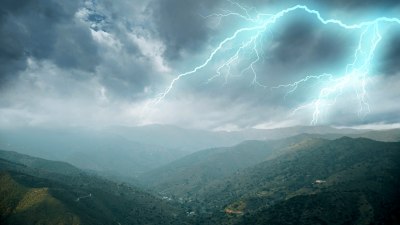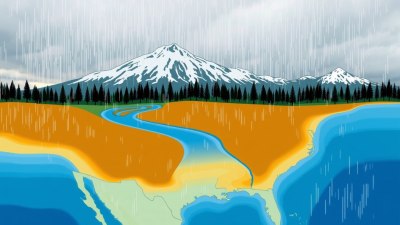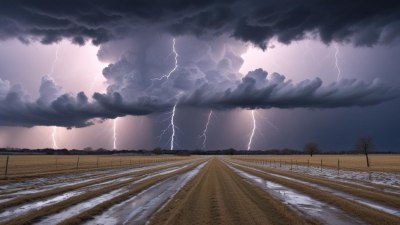What Makes Thunder Sound Different
Explore the science behind the varying sounds of thunder and understand its unique characteristics.

Thunder is a natural phenomenon associated with lightning, a stunning display of power and energy. The sound of thunder can vary significantly based on several factors, making it a fascinating topic for exploration. Understanding these differences not only heightens our appreciation of storms but also enhances our knowledge of atmospheric science.
When lightning strikes, it rapidly heats the air around it to temperatures as high as 30,000 degrees Fahrenheit (16,649 degrees Celsius) in mere microseconds. This superheating causes the air to expand explosively, creating a shock wave that we hear as thunder. The process begins when an electrostatic discharge occurs during a storm, which can manifest in different styles depending on various factors, such as the distance from the observer, the type of lightning, and the atmospheric conditions.
The Role of Distance
One of the primary factors that affects the sound of thunder is distance. The farther away the lightning strike, the longer the sound takes to reach the observer. This time delay causes the thunder to sound quieter and can often lead to a rumbling or rolling sound rather than a sharp boom. Thunder observed from a distance is typically perceived as lower in frequency—it can be experienced as a deep rumble that seems to echo across the landscape. In contrast, thunder that is closely associated with the nearby lightning strike is heard as a sharp crack or boom, which occurs due to the direct transmission of sound waves through the air.
Atmospheric Conditions
The state of the atmosphere plays a critical role in how thunder sounds. Factors such as humidity, temperature, and wind can influence the propagation of sound waves. When the air is humid, sound waves travel more efficiently, allowing the thunder to be heard more clearly over longer distances. Conversely, in dry air, sound waves may dissipate more quickly, altering the experience of thunder. Furthermore, temperature gradients in the atmosphere can bend sound waves. A common scenario involves warm air sitting above colder air—this phenomenon can create a distinct sound signature for thunder, sometimes allowing it to be heard from miles away, yet the rumble may appear to roll rather than strike directly.
Types of Thunder
Thunder is not just a single, uniform sound but rather embodies a variety of distinct types based on how the lightning discharge occurs. For instance, the sound of “intra-cloud” lightning, which occurs within a single cloud, tends to have a soft rumble. This is largely due to the lesser intensity of the discharge. On the other hand, “cloud-to-ground” lightning captures the typical crackling sound of thunder, often producing a sharper, louder noise that we are more familiar with. The nature of the discharge modifies how the emitted sound waves interact with the environment, leading to variations in perception.
Sound Wave Characteristics
Thunder can be analyzed not just in terms of its loudness but also its frequency components. The sharp crack of thunder generates high-frequency sound waves, while the rolling rumbles are predominantly low-frequency. The human ear perceives these high frequencies more acutely; thus, close strikes that produce a sharp crack are heard first, followed by the more pervasive rumble, which can last for several seconds. The complex interaction of different frequencies creates the layered experience of thunder that captivates anyone caught in a storm.
Geographic Influences
The sound of thunder can also vary geographically. Mountains, valleys, and bodies of water can all influence sounds as they create unique acoustic environments. In mountainous areas, thunder may be amplified due to the elevation and the way sound waves reflect off of rocky surfaces. Conversely, in flat plains, thunder may travel far and wide, creating a booming reverberation as it interacts with the flat landscape. Urban areas full of buildings can create unpredictable sound patterns, as they can reflect and absorb sound waves differently than natural environments.
Numerical Analysis of Thunder Sound
Researchers have employed various methods to analyze thunder numerically. These analyses often include recording thunder sounds using sensitive audio equipment and analyzing the acoustic properties using Fourier transforms. Studies have shown that the fundamental frequency of thunder is often between 20 Hz to 100 Hz, with variations based on the distance and intensity of the lightning strike. The measurable sound levels typically reach 120 dB at closer proximities, making it comparable to the sound of a jet taking off, while distant thunder may drop to around 50-70 dB.
Thunderstorm Dynamics
The dynamics of thunderstorms contribute significantly to the variations of thunder sound. The severity of a thunderstorm can dictate the intensity and type of thunder produced. Severe thunderstorms often generate more cloud-to-ground lightning, producing louder, more aggressive thunder sounds. In contrast, lighter showers might consist of more intra-cloud lightning, resulting in softer rumbles. The lifecycle of a thunderstorm—including its development, peak intensity, and dissipation—can provide insight into the auditory signature of thunder that it may produce during its phases.
Implications of Thunder Sounds
Understanding the characteristics of thunder sound has practical implications, including improving weather forecasting and public safety. Knowledge about how thunder correlates with proximity and atmospheric conditions can aid meteorologists in predicting storm intensity and behavior. For instance, a prolonged rumble of thunder may indicate a storm's continuation or intensification, while quick sharp cracks might signal that the storm's power is subsiding. Additionally, the public can benefit from understanding thunder’s characteristics to assess their safety during severe weather, such as staying indoors during loud thunderstorms.
Cultural Interpretations
Throughout history, cultures worldwide have interpreted thunder in various ways, often attributing it to deities or supernatural phenomena. For example, Indigenous communities might view thunder as a communication from the spirit world or the voice of a god. In other traditions, thunder can be seen as a symbol of impending change or a reminder of nature's power. These interpretations illustrate the rich tapestry of human experience concerning thunder, connecting it deeply with cultural narratives that transcend time and geography.
In conclusion, the sound of thunder is a multifaceted phenomenon influenced by various scientific principles, atmospheric conditions, geographical features, and cultural interpretations. Its variability provides a dynamic auditory experience that changes with each storm. Understanding these differences not only fosters a deeper appreciation for meteorological phenomena but also serves to educate and inform individuals about nature’s complex and awe-inspiring processes.











